
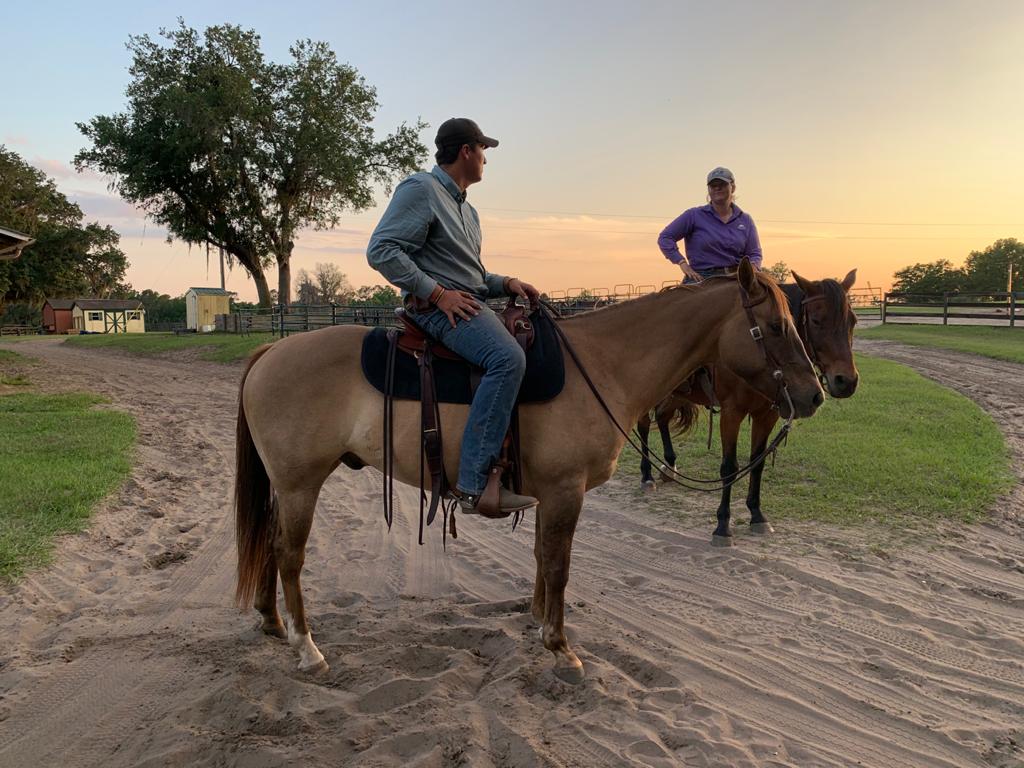
At Natural Horseman Saddles we recommend using a ‘Back Cinch’ on all our western saddles for some very good reasons.
One is Safety. The other is stability. But, how you use your back cinch on your western saddle can affect both of these things.
Used the right way, your saddle will stay safely in place and be more comfortable for your horse.
The wrong way, as we often see, can render it pretty much useless or create a situation ending in disaster!
Firstly, how you should use the back cinch…
Most back or rear cinches (sometimes even known as bucking straps or flank girths) are connected via a short, leather (4-6″) cinch ‘hobble’ which clips to your front cinch. It is designed to sit fairly snug (not super tight) around the horse.
The connection of the front and rear cinches distributes pressure across the firm sternum area of your horse, not the soft belly (which is further back). Horses do not seem to mind pressure in this area.
Should the rear cinch sit too far back all sorts of troubles can occur.
We will discuss that in a minute!
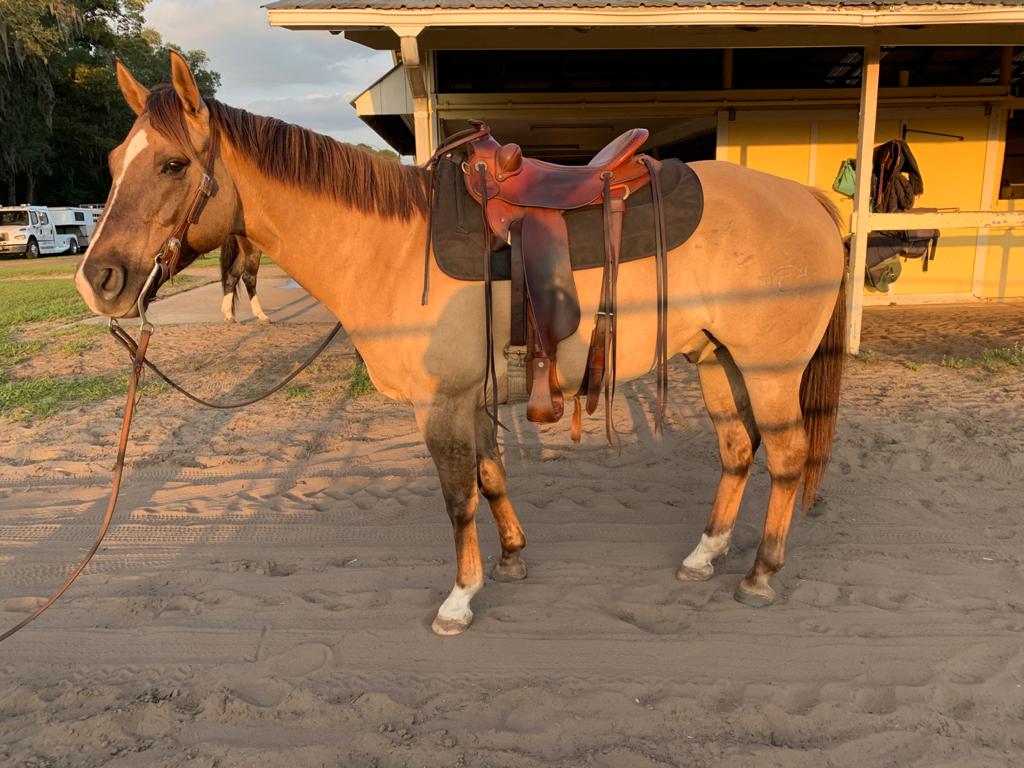
How Tight Should The Back Cinch Be?
You should be able to insert at least two fingers between your horse and the rear cinch when the rider is unmounted but fingers will feel snug in there.
Once the rider is mounted and the horse engages abdominal muscles while traveling, the cinch will appear significantly looser – so allow for that.
If the back cinch is fastened to be snug but not uncomfortably tight, it helps stabilize the back of the saddle (horizontally and vertically) during travel. This facilitates a balanced, comfortable fit of the saddle in movement from the Horse’s perspective.
Therefore, it is safer for Horse and Rider to use a rear cinch as opposed to not.
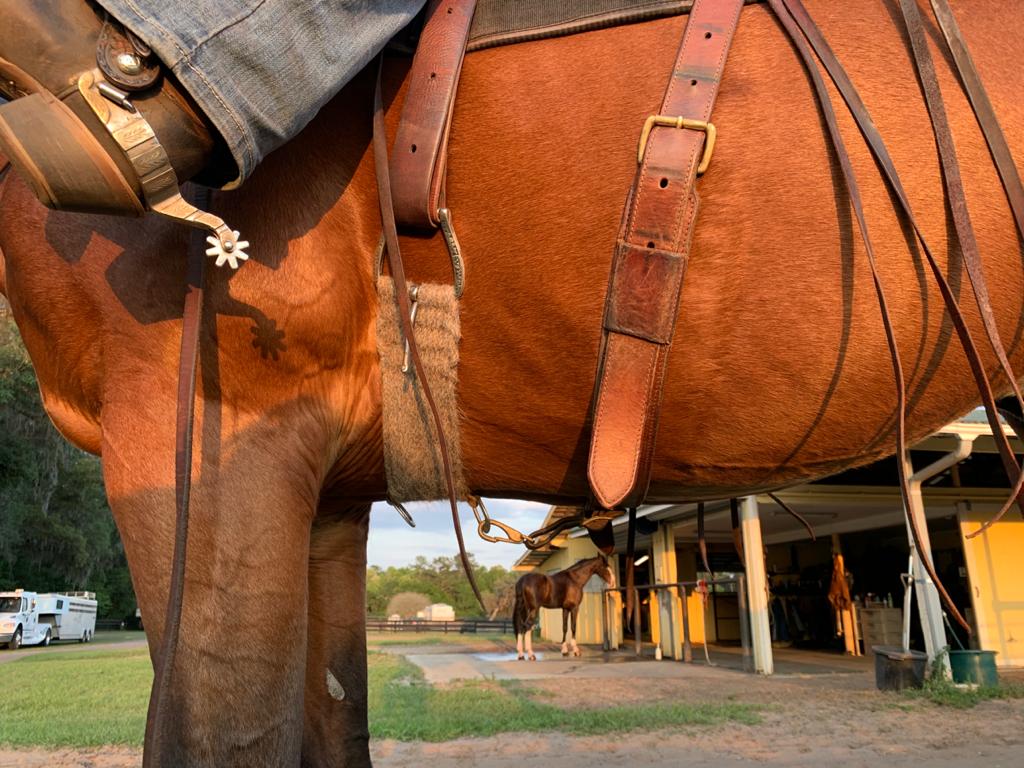
How you shouldn’t use the back cinch…
Lots of people avoid using the back cinch because they think their horse will BUCK. Not so if attached properly… However, If you are unsure if your horse is going to react, it pays to be certain you tighten your front cinch, then very gently slide the rear cinch up and down, back and forth, creating a little light pressure, then relief.
If your horse bucks, perhaps you pulled too tight, or you may need to prepare better with some rope exercises (see this link)
If the rear cinch is tightened up too much over the delicate soft belly area (because the cinch hobble strap is too long), the horse would be very uncomfortable. You are essentially employing the techniques rodeo cowboys use to intentionally make the horse buck! Be sure you don’t make that mistake!
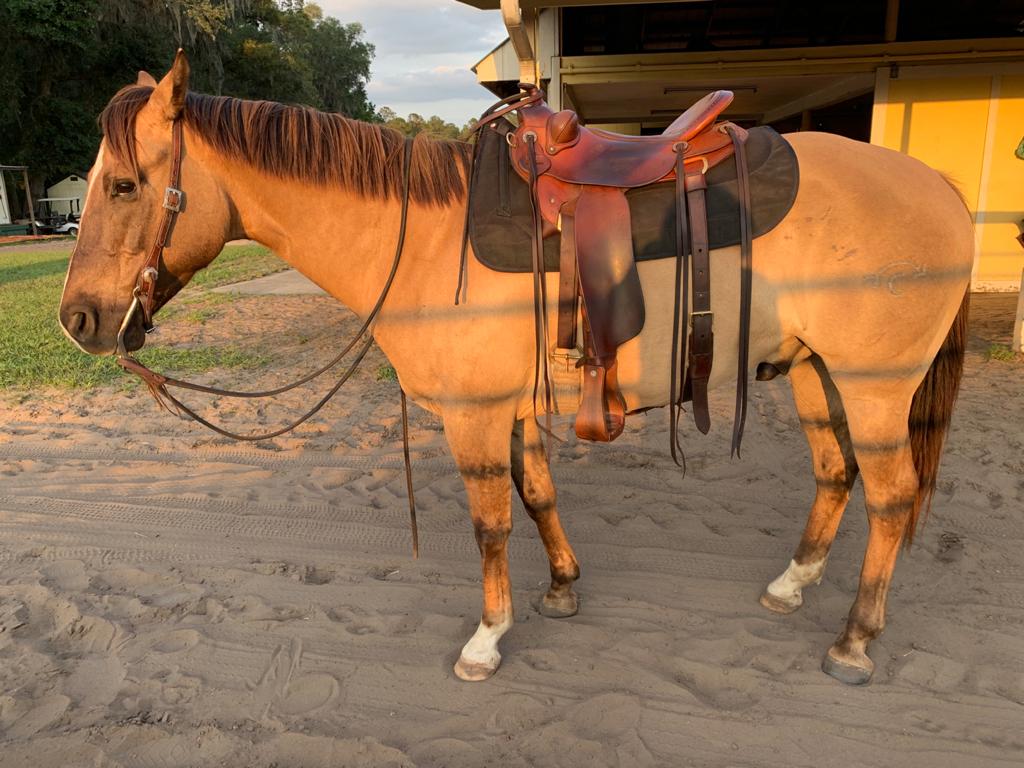
Luckily our beautiful model is so patient, but you can tell from his expression they are thinking ‘whaaaaat?”.
Dangers of a loose back cinch…
While over tightening is a problem, a rear cinch left too loose creates other issues.
If it is left dangling under the soft belly (as is often seen) its usefulness is absolutely minimal. Team ropers often hang it this way and it can keep the saddle from tipping up too high in the back when the rider ties onto a cow and the horse stops hard. But most of us don’t engage in that activity and such hard ties sure do put a lot of pressure on a horse’s shoulders. With the back cinch long, the shoulder area of the saddle becomes even more of a cornerstone, creating painful focal point pressure.
Should your horse choose to buck, the rear of the saddle will lift up and no doubt you will too!
If the back cinch is dangling with lots of slack, it can also be extremely dangerous should a horse catch his rear foot in the space.
He might even kick at a fly on his belly and quickly become a 3 legged monster! (Some people “in the know” call dangling back cinches “fly hobbles”.)
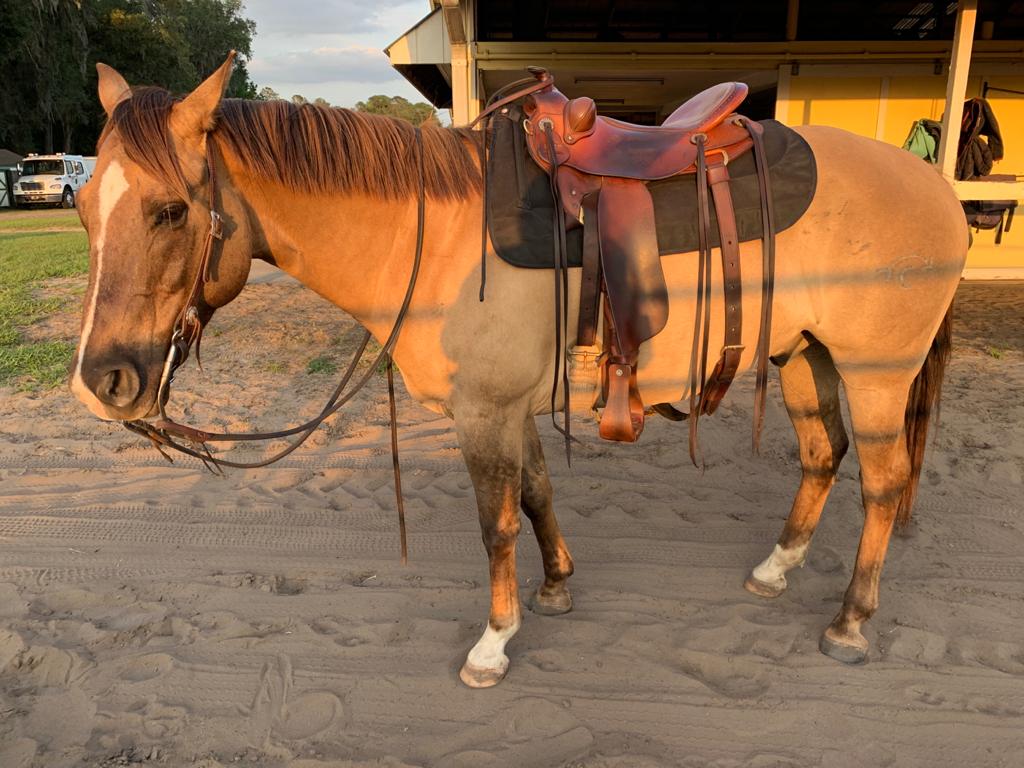
So… We hope this has helped you work out the how’s and why’s of your saddle’s rear rigging. You will find one on ALL of our western saddles. They’re easily removable should you prefer for show rules/conditions etc, but we would always urge you to use one during training, trail riding or whatever.
If you enjoyed this post, be sure to follow us on social media and stay up to date with the resources we are creating. Also check out our website www.naturalhorsemansaddles.com to learn more about quality riding equipment and our revolutionary saddles and saddle system.
#rethinksaddlefit – With Natural Horseman Saddles
